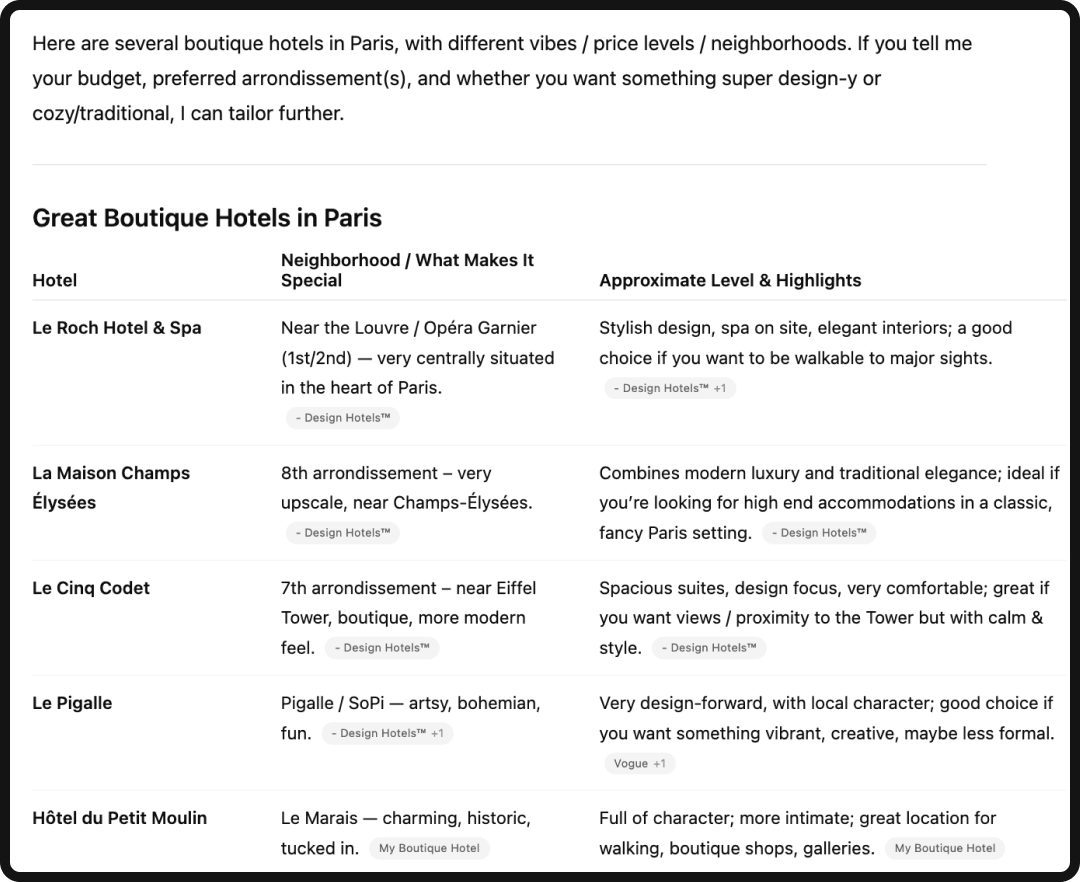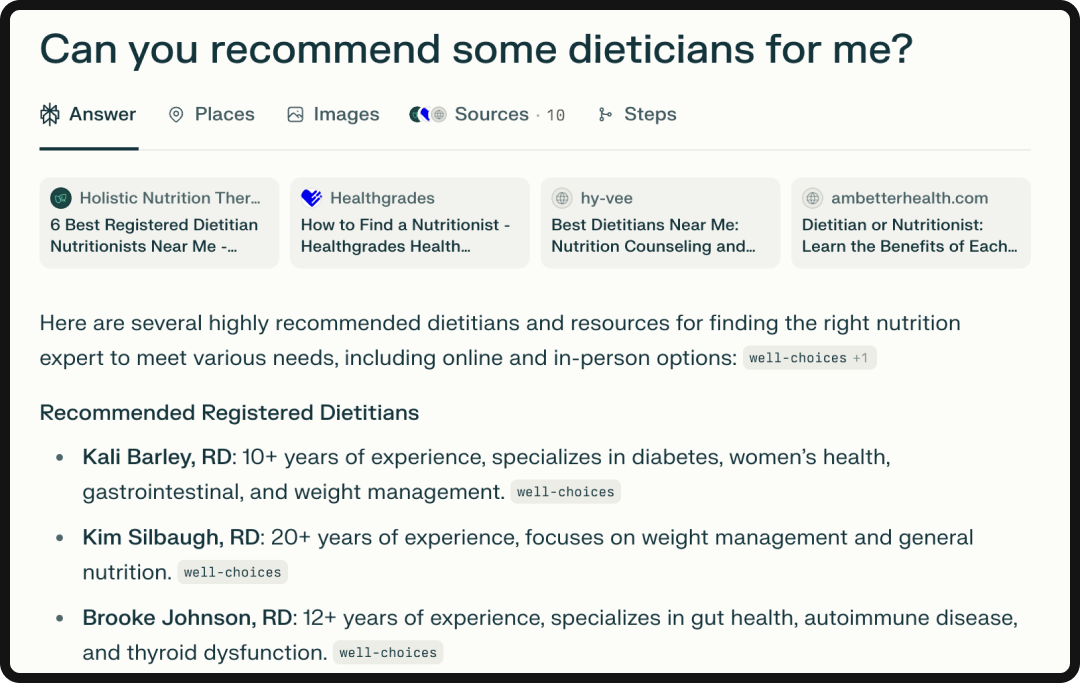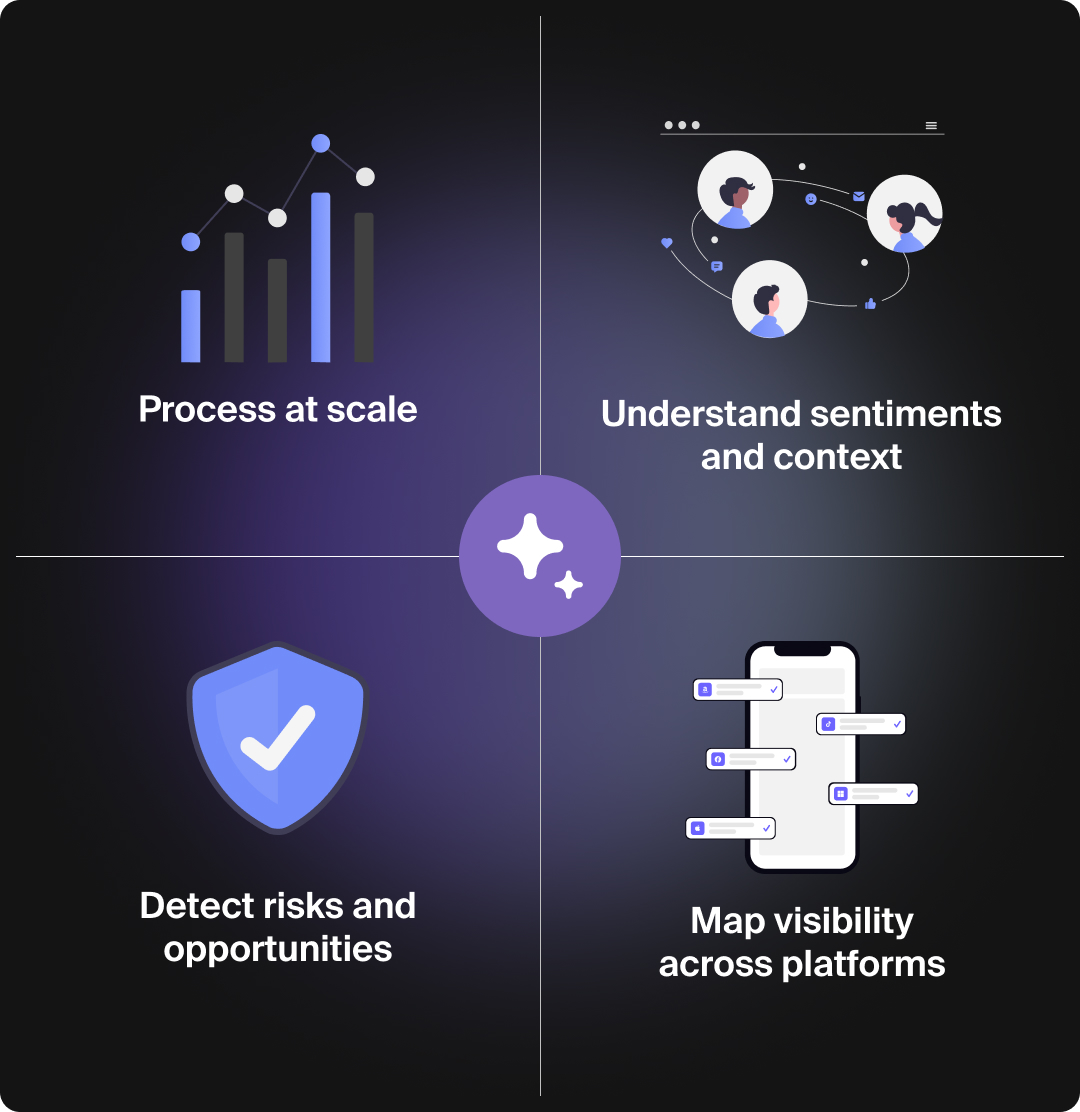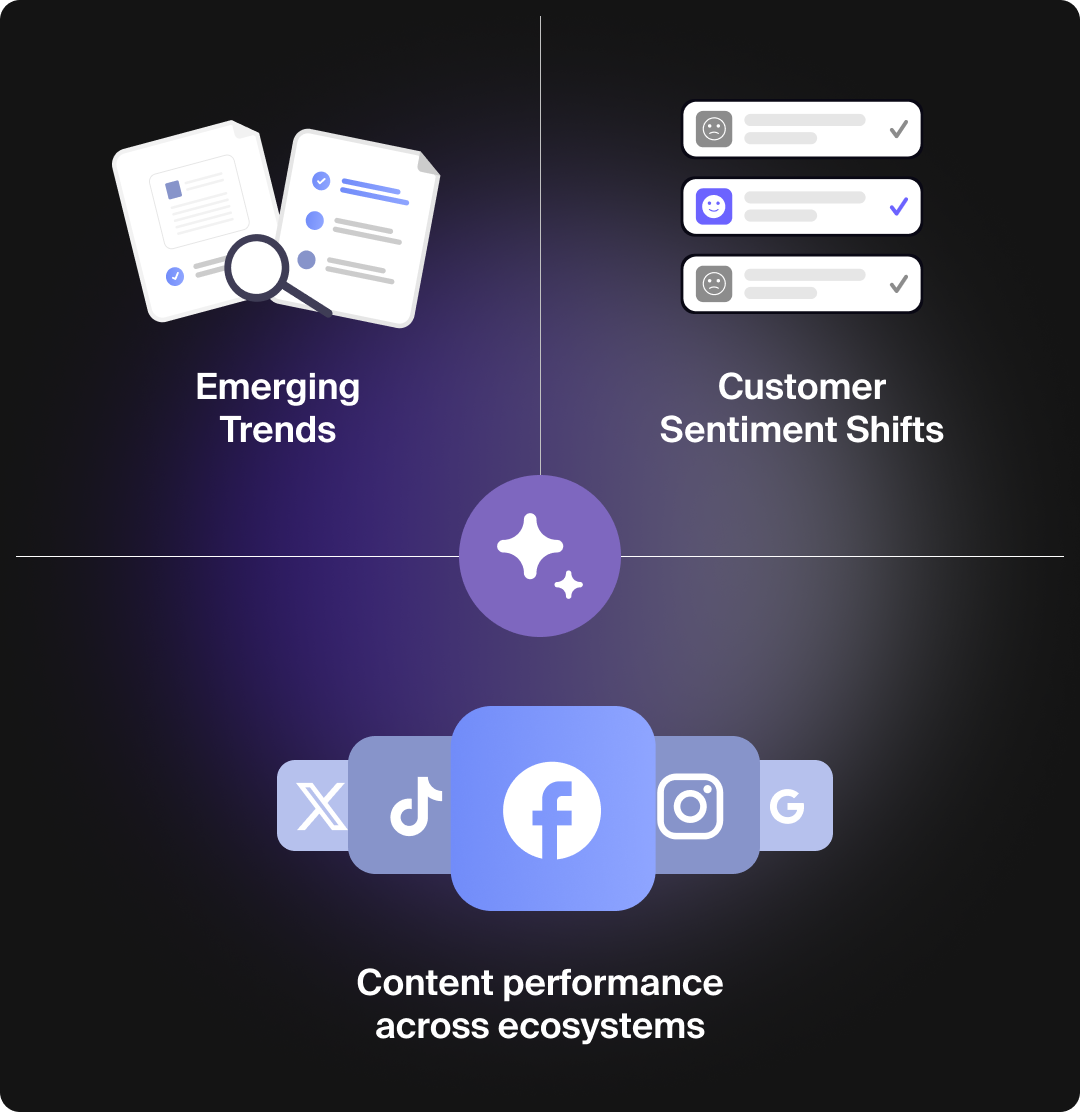

Business decisions used to depend on quarterly reports, and marketing teams were always at the mercy of reviewing campaign performance months after launch. On the other side of things, executives would assess brand reputation through surveys conducted months prior to launch. By the time insights reached the boardroom, the market had already moved on.
These delays are no longer acceptable or viable. Today, AI content monitoring is transforming how businesses make strategic decisions by revealing how brands, competitors, and industries are being represented in the digital and AI-driven spaces where customers actually make choices. This isn't just about tracking mentions or measuring sentiment. It's about turning real-time intelligence into competitive advantage.
AI content monitoring isn't just a marketing function anymore; it's becoming a strategic decision-making tool across all businesses. While traditional monitoring produced lengthy reports for quarterly review, AI-driven systems surface actionable insights immediately, influencing different sectors of decisions that matter most:
Perhaps the most powerful shift is cultural: AI monitoring allows decision-makers to operate with a current and contextual view of the market rather than relying solely on lagging indicators. This impacts:
In short: AI content monitoring translates digital chatter into business-critical intelligence. And in an environment where perception drives purchase, ignoring those signals is no longer an option.
The reason AI content monitoring has become strategically essential is simple: the way people find information has fundamentally shifted. Customers are no longer just typing queries into Google and scanning through lists of links. They're asking AI assistants for direct answers; and those answers shape what people read, watch, and buy.
This evolution has created a new reality for brands:



These aren't just search queries, they're decision-critical moments. And if your brand isn't being surfaced in AI-driven environments, you risk invisibility at the exact moment when customers are making choices. Meanwhile, your competitors who do appear are capturing market share (without you even knowing it).
This shift has given rise to a new discipline: Answer Engine Optimization (AEO). We’ll get into this more in a little bit, but at its core, AEO is the practice of ensuring that AI assistants choose your brand when summarizing information. And it's tightly linked to monitoring: you can't optimize what you can't measure.
Traditional content monitoring is the practice of tracking what's being said about a brand, product, or topic across digital channels. Before the incorporation of AI, this meant manually scanning social media mentions, reviewing press coverage, or using keyword alerts to flag relevant stories. While useful, these methods were limited by speed, scale, and human bandwidth.
AI content monitoring changes the equation. By combining Natural Language Processing (NLP), Machine Learning (ML), and Large Language Models (LLMs), AI systems can:

An AI monitoring system is a tool or platform that uses artificial intelligence to track and analyze digital content in real time. Unlike manual monitoring, these systems can evaluate sentiment, detect patterns, and generate insights across vast datasets, allowing brands to understand how they are perceived and where they appear in both traditional and AI-powered search environments.
Traditionally, marketers relied on post-campaign reports to measure reach, engagement, or media impact. With AI content monitoring, brands can monitor the following items in real time:

The strategic value of AI content monitoring extends across every industry:
For modern brands, this isn't just about vanity metrics or quarterly PR summaries. AI content monitoring is about business-critical visibility.
For years, digital content strategy revolved around SEO: optimizing for how people searched on Google. But the shift to generative AI means that instead of scanning through lists of links, users now get direct information in the form of synthesized answers (with citations or without) from the model of their choosing. That’s why we need to turn our attention toward AEO.
AI content monitoring and AEO are two sides of the same coin:
Without monitoring, you don't know if you're being surfaced. Without optimization, you can't influence those outcomes. Together, they form a feedback loop that helps brands stay visible and relevant.
That’s why having access to a platform that can do both of these things at the same time can be so powerful. Enter Goodie, the platform that allows you to track your brand’s performance and sentiment while also providing suggestions within the optimization platform. By having access to a tool that does both, AEO efforts can expand and grow for the future.
You can use AI for content monitoring by deploying tools that track how your brand is mentioned across generative platforms, search engines, and social media. These insights then guide your AEO strategy; helping you optimize structured data, refine messaging, and ensure your brand appears (accurately) in the answers AI systems deliver.
AI is no longer just another tool in the marketer's stack; it's the lens through which customers discover, evaluate, and choose brands. AI content monitoring gives businesses the ability to see how they're represented in this new landscape, detect risks before they escalate, and uncover opportunities that might otherwise go unnoticed. Paired with Answer Engine Optimization, it ensures that brands don't just show up, but show up accurately and authoritatively when AI engines deliver answers.
The message for leaders is clear: monitoring isn't optional, and optimization isn't a "nice to have." Together, they're becoming core to how decisions are made (both by customers and within the boardroom).
The businesses that succeed in an AI-first world will be those that act now: investing in monitoring systems, preparing their content for AEO, and building a culture that treats AI-driven insights as a compass for strategic growth. In a landscape defined by constant change, AI content monitoring is the anchor that turns uncertainty into opportunity.


